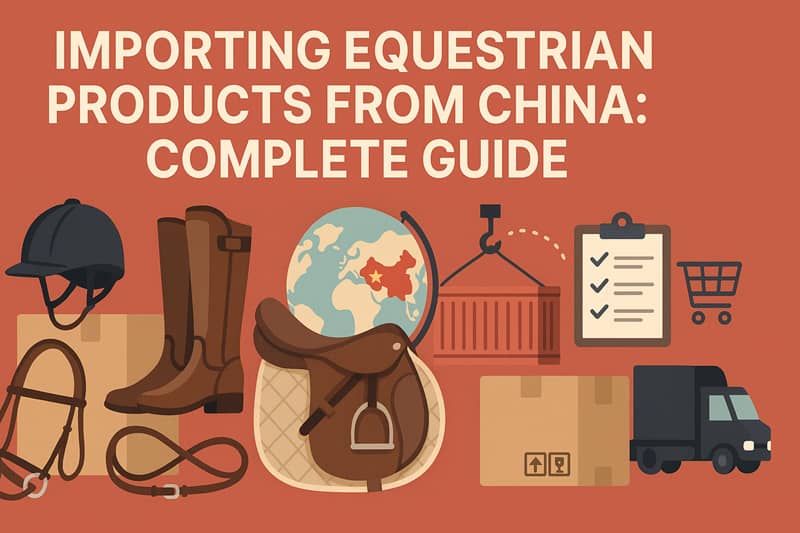Quick Value Comparison: Why Import from China?
| Factor | China Import | Domestic Supply |
|---|---|---|
| Cost Savings | 30-60% lower | Base price |
| Minimum Orders | 100-500 units | 50-100 units |
| Ledtid | 25-45 days | 5-15 days |
| Customization | Extensive options | Limited options |
Key Takeaway: Importing equestrian products from China offers significant cost advantages and customization opportunities. However, success depends on understanding regulations, finding reliable suppliers, and managing logistics effectively.
Is Importing Equestrian Products from China Right for You?
Market Opportunity and Growth Potential
China dominates the Asian equestrian market with over 40% market share. Moreover, the Asia-Pacific equestrian equipment market reached $234.03 million in 2024. Furthermore, experts project a 6.2% annual growth rate through 2033.
The Chinese manufacturing ecosystem offers several advantages for importing equestrian products. First, mature manufacturing clusters in Zhejiang and Guangdong provinces provide extensive expertise. Additionally, these regions specialize in saddlery hardware, leather goods, and ridkläder.
When Importing Makes Financial Sense
Consider importing from China when your business meets these criteria. Firstly, you need consistent monthly orders of 100+ units per product. Secondly, you can commit to 3-6 month lead times for planning. Thirdly, cost savings of 30-60% justify the additional complexity.
"Brands are leveraging China's advanced textile clusters in Zhejiang and Guangdong to shorten lead times from design to sample by up to 40%" — Sourcing Journal, 2024
Most successful importers focus on specific product categories. For instance, skyddsprodukter för hästar like bell boots and leg wraps offer excellent margins. Similarly, riding accessories provide steady volume opportunities.
Step-by-Step Import Process (The How-To Guide)
Phase 1: Research and Supplier Selection (Weeks 1-2)
Start by clearly defining your product requirements. First, specify the exact type of equestrian products you need. For example, distinguish between safety-critical items like helmets and non-safety products like equestrian bags.
Next, research potential suppliers through multiple channels. Use platforms like Alibaba, Global Sources, and Made-in-China for initial searches. Additionally, attend trade shows like the Canton Fair or China International Horse Industry Expo. These events provide face-to-face supplier meetings and product evaluations.
Phase 2: Samples and Negotiations (Weeks 3-6)
Request samples from 3-5 shortlisted suppliers for comparison. Typically, samples cost $50-150 per item but are often refundable against bulk orders. Furthermore, evaluate samples for quality, materials, and compliance with safety standards.
During negotiations, focus on three key areas. First, establish clear pricing structures with volume discounts. Second, agree on quality specifications and testing requirements. Third, define payment terms and delivery schedules that protect your interests.
Phase 3: Production and Quality Control (Weeks 7-10)
Once you place an order, implement a robust quality control system. Schedule pre-production meetings to confirm specifications and materials. Additionally, conduct mid-production inspections to catch issues early. Finally, perform pre-shipment inspections before goods leave the factory.
Phase 4: Shipping and Customs (Weeks 11-12)
Coordinate shipping logistics based on your timeline and budget. Ocean freight takes 25-30 days but costs significantly less than air freight. Conversely, air freight delivers in 5-7 days but costs 3-4 times more per kilogram.
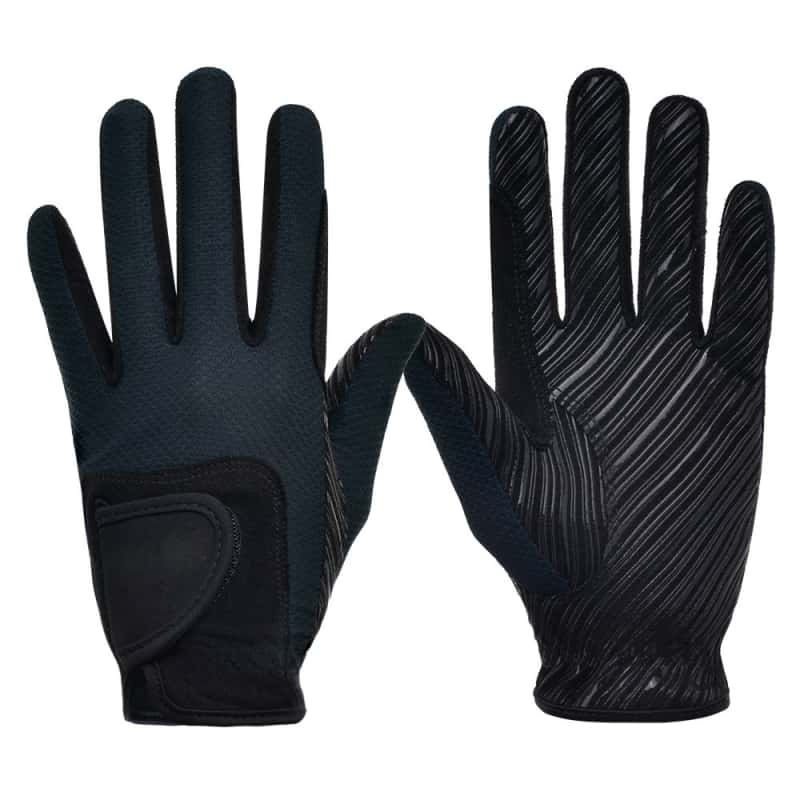
Premium ridhandskar
Advanced grip technology and comfort
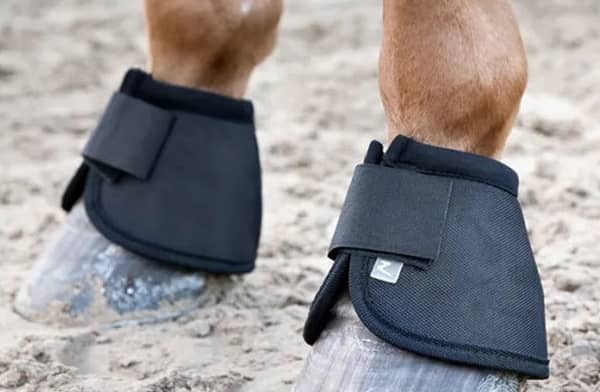
Protective Bell Boots
Durable horse leg protection

Custom Saddle Pads
Breathable and shock-absorbing
Understanding Costs: The Complete Budget Breakdown
FOB vs DDP Pricing Structures
Understanding pricing terms significantly impacts your total import costs. FOB (Free on Board) pricing typically runs 10-20% cheaper than DDP (Delivered Duty Paid). However, FOB requires you to handle shipping, insurance, and customs clearance.
For first-time importers, DDP often makes more sense despite higher costs. Your supplier handles all logistics and delivers goods to your warehouse. Conversely, experienced importers prefer FOB for better cost control and logistics flexibility.
Real ROI Calculations With Examples
Let's examine a realistic example of importing ridbyxor. Domestic wholesale price: $45 per pair. Chinese FOB price: $18 per pair. Shipping and duties add $8 per pair. Total landed cost: $26 per pair, representing 42% savings.
Essential HS Codes for Equestrian Products
Proper customs classification ensures smooth clearance and correct duty rates. Most equestrian products fall under specific HS codes. For example, HS 4201 covers saddlery, harnesses, leads, reins, and sadelkuddar. Meanwhile, HS 4104 applies to bovine and equine leather products.
Safety equipment requires special attention to classification and standards. Safety products like helmets and body protectors must meet specific regulatory requirements for importation.
Tariff Implications and Current Rates
Understanding current tariff structures helps with accurate cost planning. Based on 2024 import data, several categories face significant tariffs:
- Equine & bovine hides from China: $1.14 billion import value
- Prepared bovine & equine leather: $122.42 million import value
- Saddlery & harness products: $17.34 million through Hong Kong
Safety Standards and Certification Requirements
Safety-critical products require compliance with specific standards. In the US, helmets must meet ASTM F1163 standards plus SEI certification. Similarly, body protectors need ASTM F1937 or F2681 compliance for legal importation.
European markets require EN standards plus CE marking for safety equipment. Additionally, all textile products need proper labeling with fiber content, care instructions, and country of origin information.
Finding and Vetting Reliable Suppliers
Where to Search for Quality Manufacturers
Finding reliable suppliers requires a systematic approach across multiple platforms. Start with established B2B marketplaces like Alibaba Gold Suppliers, Global Sources, and Made-in-China verified sellers. These platforms provide supplier verification and transaction protection services.
Trade shows offer invaluable face-to-face supplier meetings. The Canton Fair, held twice yearly, features thousands of equestrian suppliers. Additionally, specialized shows like China International Horse Industry Expo focus specifically on equestrian products and equipment.
Verification Checklist and Red Flags
Implement a thorough vetting process to avoid problematic suppliers. First, verify business licenses and export compliance documentation. Second, request customer references and contact them directly. Third, conduct factory visits or hire third-party auditing services.
Case Study: Working With Professional Manufacturers
Established manufacturers like Zest ryttare demonstrate the benefits of partnering with experienced suppliers. With over 16 years of textile and performance-wear manufacturing expertise, they provide comprehensive OEM- och ODM-tjänster for equestrian brands worldwide.
Professional manufacturers offer several advantages. They provide Tjänster för snabb provtagning and maintain consistent quality standards. Additionally, they understand international compliance requirements and can assist with documentation and certifications.
Quality Control That Actually Works
Three-Stage Inspection System
Implementing a systematic inspection process prevents quality issues and costly returns. The three-stage system includes pre-production, mid-production, and pre-shipment inspections. Each stage serves specific purposes and catches different types of problems.
Pre-production inspections verify materials, colors, and specifications before manufacturing begins. Mid-production inspections catch process issues while corrections remain feasible. Finally, pre-shipment inspections ensure finished products meet all requirements before shipping.
Material Verification and Performance Testing
Material verification prevents costly surprises and ensures product authenticity. Test leather products to distinguish genuine leather from synthetic alternatives. Additionally, verify fabric compositions, especially for ridkläder where specific performance characteristics matter.
Performance testing validates that products meet intended specifications. For instance, test tensile strength of headcollars and lead ropes. Similarly, evaluate colorfastness of dyed materials to prevent color bleeding during use or washing.
Contract Protection and Acceptance Criteria
Clear contracts protect your interests and establish quality expectations. Define specific acceptance criteria including material specifications, dimensions, and performance standards. Additionally, establish remedies for quality failures such as replacement, refund, or discount provisions.
Include quality control clauses that specify inspection rights and procedures. Furthermore, require suppliers to maintain quality control systems and provide test reports for safety-critical products like helmets and body protectors.
Shipping and Logistics Made Simple
FCL vs LCL vs Air Freight Decision Matrix
Choosing the right shipping method balances cost, speed, and volume requirements. Full Container Load (FCL) works best for orders exceeding 15 cubic meters or high-value shipments requiring security. Costs average $1,200-1,500 per container to US West Coast ports.
Less than Container Load (LCL) suits smaller orders but takes longer due to consolidation delays. Air freight delivers fastest but costs $6-8 per kilogram, making it suitable only for urgent or high-value lightweight items.
Transit Times and Seasonal Factors
Understanding realistic transit times prevents customer disappointment and inventory shortages. Ocean FCL shipments take 25-30 days to US West Coast and 35-40 days to East Coast ports. LCL adds 5-7 additional days for consolidation and deconsolidation.
Seasonal factors significantly impact shipping schedules and costs. Chinese New Year (January/February) disrupts production for 2-3 weeks. Golden Week (October) causes similar delays. Plan accordingly by placing orders early or building buffer inventory.
"Function-first design is dominating 2025's equestrian accessory trends, with emphasis on durability and performance over aesthetics alone." — Angela Murray, Equestrian Industry Analyst
Cost Optimization Strategies
Several strategies reduce shipping costs without compromising service quality. First, consolidate orders to achieve FCL volumes and better rates. Second, use professional logistics services that negotiate volume discounts with carriers.
Consider alternative shipping routes during peak seasons. For example, shipping via Long Beach instead of Los Angeles sometimes offers faster clearance. Additionally, some importers use Canadian ports to avoid US port congestion during busy periods.
Avoiding Common Pitfalls
Communication Barriers and Solutions
Language differences create the most frequent misunderstandings in international trade. Miscommunication leads to wrong specifications, delivery delays, and quality issues. Therefore, establish clear communication protocols from the beginning of your relationship.
Use professional translators for complex technical discussions and contracts. Additionally, create detailed specification sheets with photos, measurements, and material samples. Furthermore, schedule regular video calls to maintain personal relationships and address concerns promptly.
Intellectual Property Protection Strategies
Protecting your designs and trademarks requires proactive measures in China. First, register your trademarks in China before sharing designs with potential suppliers. Chinese trademark law follows "first to file" principles, not "first to use" like US law.
Include strong confidentiality clauses in all supplier agreements. Additionally, limit design sharing to verified suppliers with established reputations. Consider working with manufacturers who have experience in private label manufacturing and understand IP protection importance.
Production Delays and Risk Mitigation
Production delays occur frequently in international manufacturing, especially during peak seasons. Build buffer time into your planning by ordering 6-8 weeks before needed delivery dates. Additionally, maintain relationships with backup suppliers for critical products.
Weather, labor shortages, and material delays can disrupt production schedules. Stay informed about conditions in your supplier's region. Furthermore, consider stock programs that maintain inventory buffers for fast-moving products.
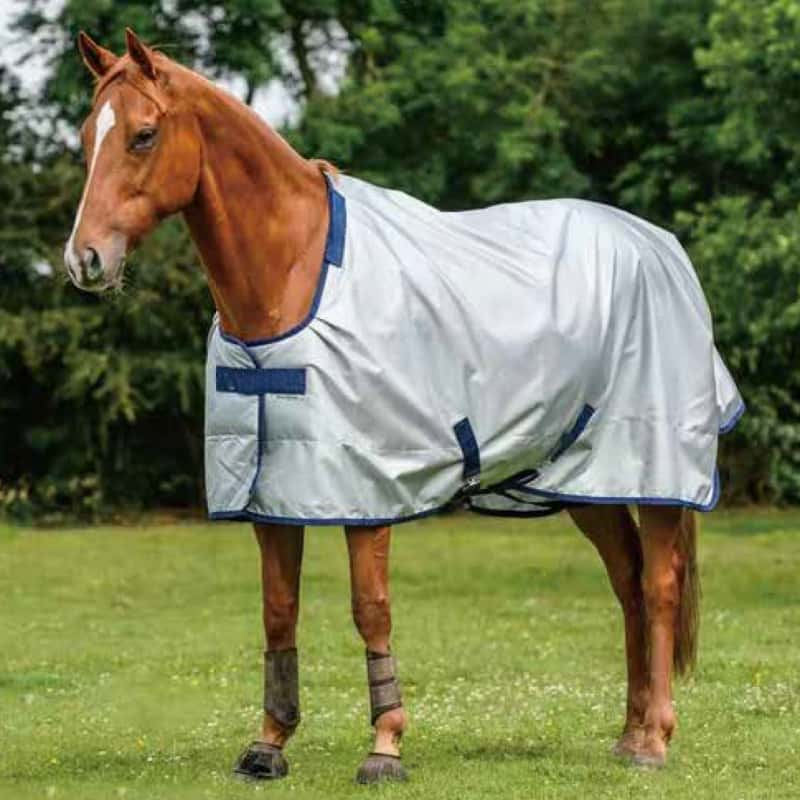
Weather Protection Rugs
Waterproof and breathable materials
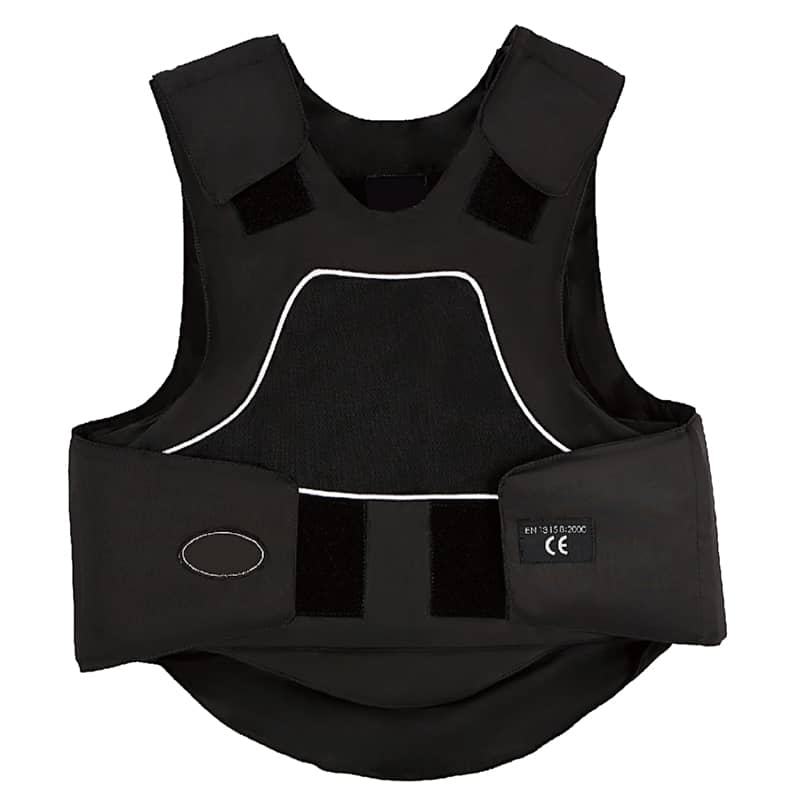
Säkerhetskroppsskydd
ASTM certified protection gear
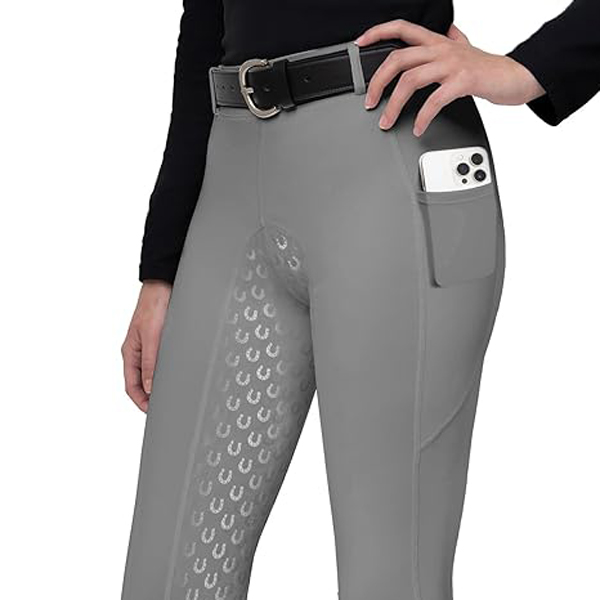
Performance Riding Breeches
Technical fabrics with grip details
Real Success Stories and Data
Import Volume Trends and Market Growth
Recent trade data reveals significant growth in equestrian product imports from China. US saddle shipments from China increased from 1,026 units in 2022 to 1,265 units in 2024, representing a 23% growth rate.
Similarly, China's import of bovine and equine leather grew from $1.10 billion in 2022 to $1.14 billion in 2024. This growth indicates increasing demand for quality leather products in Chinese manufacturing for export markets.
ROI Benchmarks by Product Category
Different equestrian product categories offer varying profit potential when imported from China. Hästvårdsprodukter typically provide 40-55% cost savings with consistent quality. Conversely, safety equipment offers smaller margins due to certification requirements but higher volume potential.
Accessories like ridhandskar and socks provide excellent margins and fast inventory turnover. Meanwhile, customized products command premium pricing but require longer development cycles and higher minimum orders.
Next Steps: Your Action Plan
30-Day Starter Checklist
Begin your import journey with this systematic 30-day action plan. Week 1: Research product categories and define specifications. Week 2: Identify potential suppliers and request initial quotes. Week 3: Narrow supplier list and request detailed samples. Week 4: Evaluate samples and begin negotiations with preferred suppliers.
During this initial phase, also research regulatory requirements for your target products. Understanding HS codes, safety standards, and documentation requirements early prevents costly delays later in the process.
Resource Links and Essential Tools
Several resources help streamline your import process. Use the US Harmonized Tariff Schedule to determine exact duty rates. Additionally, leverage trade platforms like Alibaba and Global Sources for supplier discovery and initial vetting.
Consider hiring experienced customs brokers and freight forwarders who specialize in equestrian products. Their expertise navigates complex regulations and ensures smooth customs clearance. Furthermore, join industry associations that provide networking opportunities and market intelligence.
When to Consider a Manufacturing Partner
Partnering with an experienced manufacturer becomes valuable when your volumes justify the relationship. Typically, this occurs when you order 10,000+ units annually across multiple product categories. Established partners provide design assistance, quality assurance, and supply chain management.
Look for partners who offer comprehensive services including material sourcing, packaging and branding, and logistics support. Additionally, prioritize manufacturers committed to sustainable practices to align with modern consumer values.
Conclusion: Start Your Import Journey Today
Importing equestrian products from China offers substantial opportunities for cost savings, product variety, and business growth. However, success requires careful planning, reliable suppliers, and thorough understanding of regulations and logistics.
The key to successful importing lies in building strong relationships with experienced manufacturers who understand international standards and quality requirements. By following the systematic approach outlined in this guide, you can navigate the complexities and unlock the benefits of Chinese manufacturing.
Ready to explore importing opportunities for your equestrian business? Kontakta Zest Equestrian today to discuss your specific requirements and learn how our 16+ years of expertise can help you build a successful import program. Our team specializes in helping equestrian brands navigate the import process while ensuring quality, compliance, and profitability.
Take Action: Schedule a consultation to discuss your specific needs. Visit our services page to learn more about our comprehensive manufacturing solutions.

